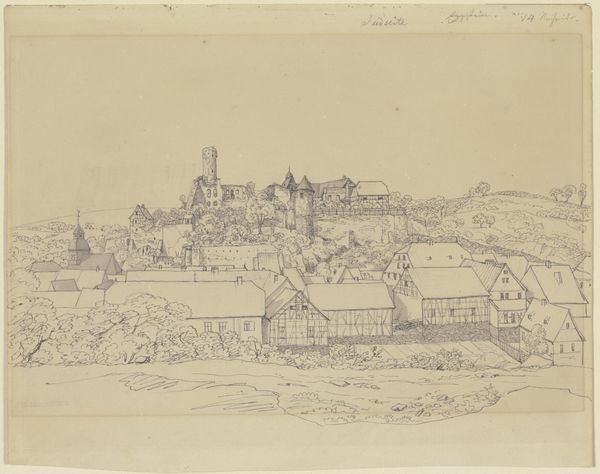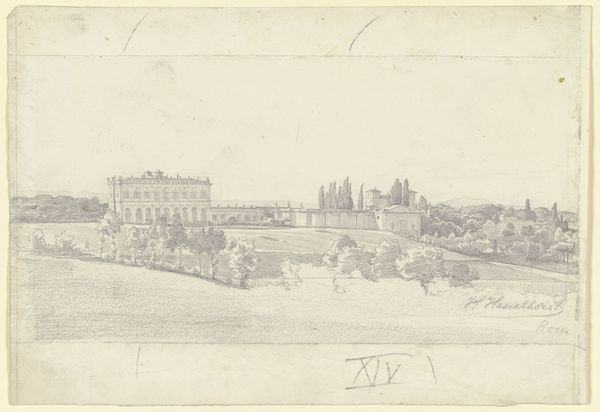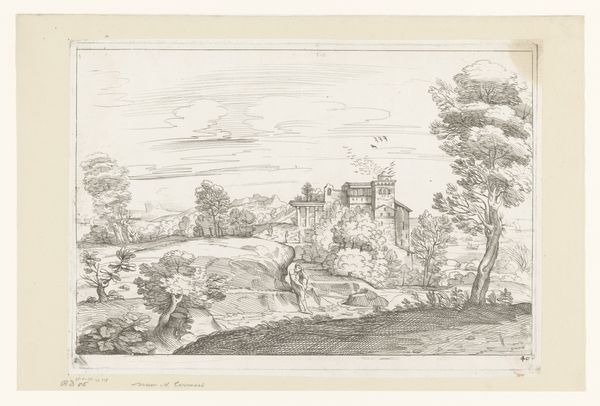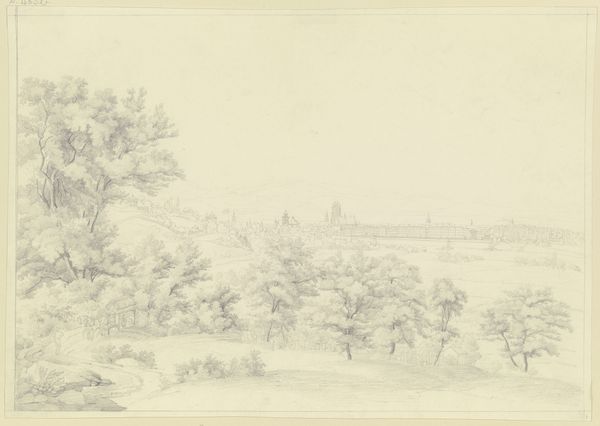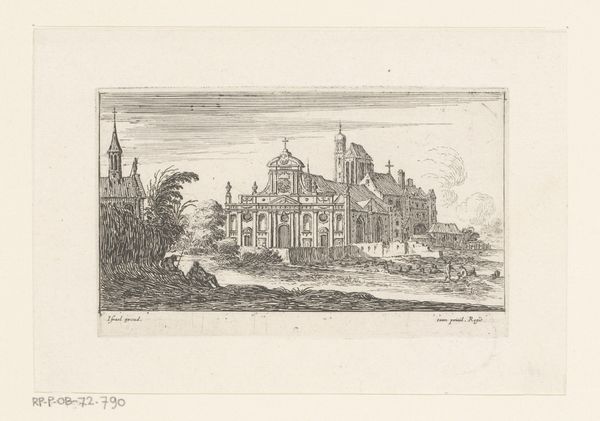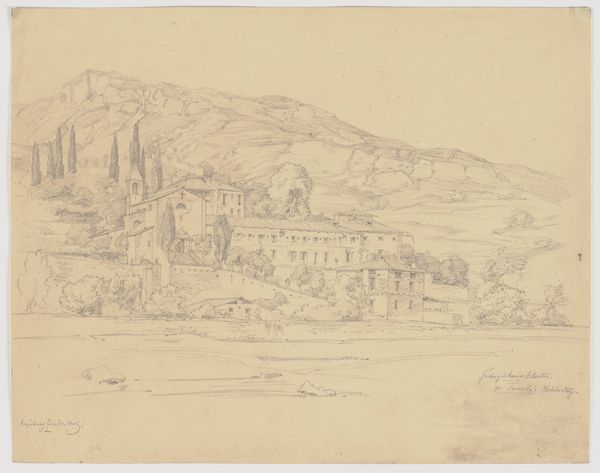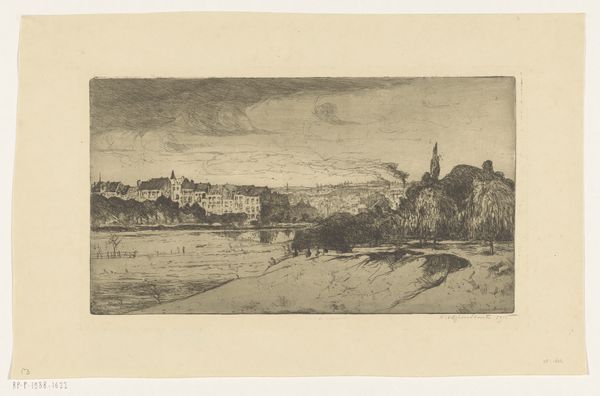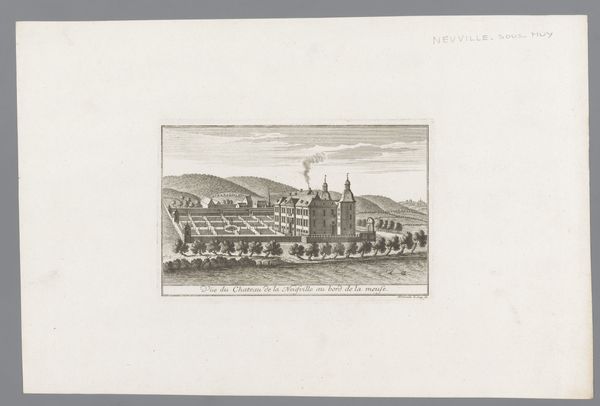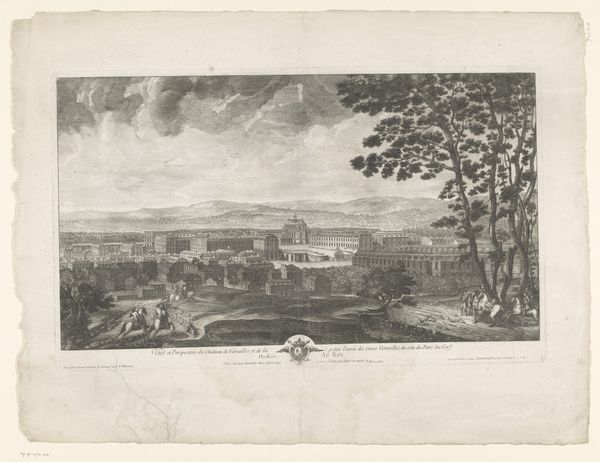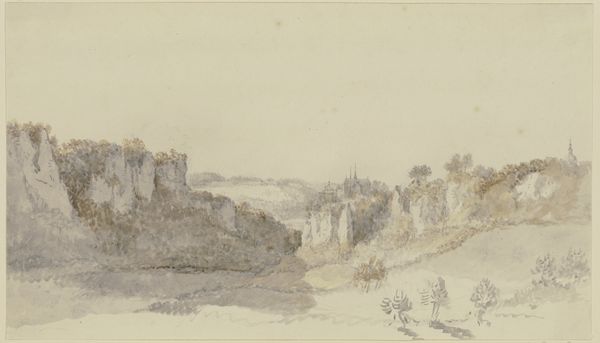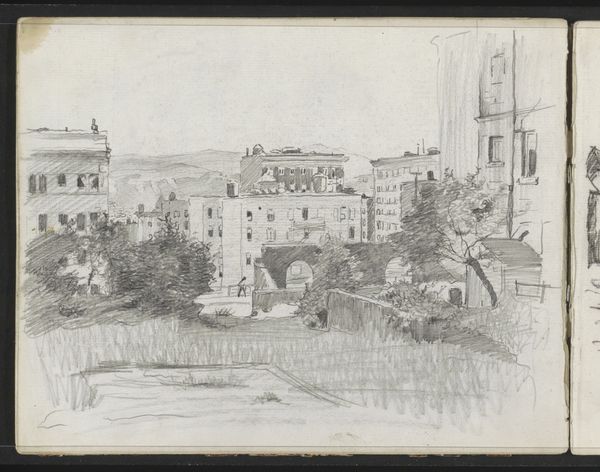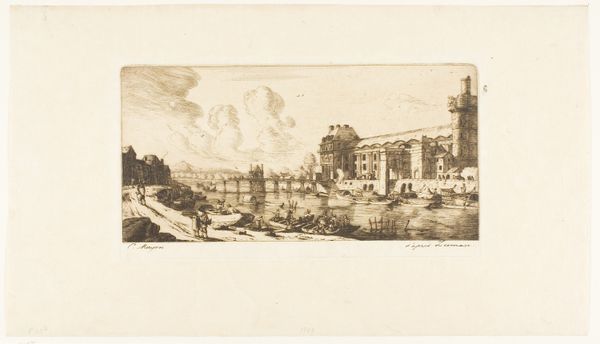
drawing, pencil, graphite, architecture
#
drawing
#
16_19th-century
#
landscape
#
romanticism
#
pencil
#
graphite
#
architecture
Copyright: Public Domain
Editor: This is August Lucas's "Die Villa Falconieri bei Frascati," a graphite and pencil drawing from 1834, housed at the Städel Museum. It’s a pretty subtle landscape. What does it evoke for you? Curator: Lucas offers us more than just a picturesque villa. Think about what Frascati represented in 1834: a retreat for the Roman elite, a visual marker of power and privilege amidst the poverty of the surrounding countryside. This drawing, rendered with such delicate precision, invites us to consider the dynamics of class and access that define these landscapes. Whose perspective are we seeing, and whose is obscured? Editor: So, it’s not just a pretty picture then, but a statement? Curator: Perhaps. Romanticism often idealized nature, but artists like Lucas also participated in shaping perceptions of place and belonging. Who is allowed to claim ownership, not just of the land, but of its representation? The cool, detached style feels complicit, almost…dispassionate. Does that reading resonate with you? Editor: I see what you mean. The precision almost feels like it's legitimizing the Villa, cementing its place in the landscape. Curator: Exactly! And that act of legitimization, the visual inscription of power, continues to have echoes today in how we perceive and value different spaces and communities. Think about contemporary gentrification and displacement – do you see parallels? Editor: Definitely! This has completely changed how I view landscape art. It's not just about the pretty scenery. Curator: Precisely. It's about critically engaging with the stories these images tell, and whose voices are amplified or silenced in the process. Always ask: who benefits from this image? Editor: That's a really powerful takeaway. I'll definitely approach art with a more critical eye now, considering the social and political context.
Comments
No comments
Be the first to comment and join the conversation on the ultimate creative platform.
